Xin Gao
Computer Science Program, Computer, Electrical and Mathematical Sciences and Engineering Division, King Abdullah University of Science and Technology, Center of Excellence for Smart Health, Center of Excellence on Generative AI, King Abdullah University of Science and Technology
MedQ-Bench: Evaluating and Exploring Medical Image Quality Assessment Abilities in MLLMs
Oct 02, 2025Abstract:Medical Image Quality Assessment (IQA) serves as the first-mile safety gate for clinical AI, yet existing approaches remain constrained by scalar, score-based metrics and fail to reflect the descriptive, human-like reasoning process central to expert evaluation. To address this gap, we introduce MedQ-Bench, a comprehensive benchmark that establishes a perception-reasoning paradigm for language-based evaluation of medical image quality with Multi-modal Large Language Models (MLLMs). MedQ-Bench defines two complementary tasks: (1) MedQ-Perception, which probes low-level perceptual capability via human-curated questions on fundamental visual attributes; and (2) MedQ-Reasoning, encompassing both no-reference and comparison reasoning tasks, aligning model evaluation with human-like reasoning on image quality. The benchmark spans five imaging modalities and over forty quality attributes, totaling 2,600 perceptual queries and 708 reasoning assessments, covering diverse image sources including authentic clinical acquisitions, images with simulated degradations via physics-based reconstructions, and AI-generated images. To evaluate reasoning ability, we propose a multi-dimensional judging protocol that assesses model outputs along four complementary axes. We further conduct rigorous human-AI alignment validation by comparing LLM-based judgement with radiologists. Our evaluation of 14 state-of-the-art MLLMs demonstrates that models exhibit preliminary but unstable perceptual and reasoning skills, with insufficient accuracy for reliable clinical use. These findings highlight the need for targeted optimization of MLLMs in medical IQA. We hope that MedQ-Bench will catalyze further exploration and unlock the untapped potential of MLLMs for medical image quality evaluation.
Wan-Animate: Unified Character Animation and Replacement with Holistic Replication
Sep 17, 2025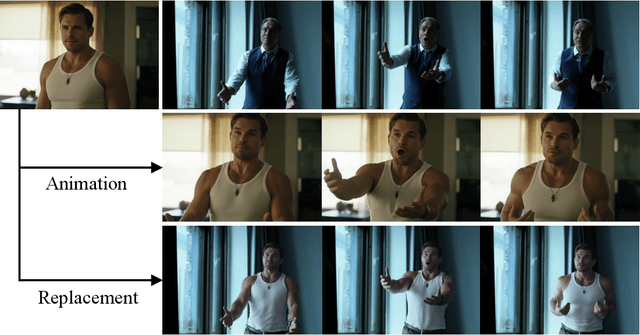


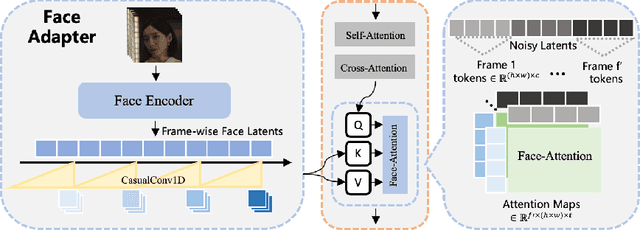
Abstract:We introduce Wan-Animate, a unified framework for character animation and replacement. Given a character image and a reference video, Wan-Animate can animate the character by precisely replicating the expressions and movements of the character in the video to generate high-fidelity character videos. Alternatively, it can integrate the animated character into the reference video to replace the original character, replicating the scene's lighting and color tone to achieve seamless environmental integration. Wan-Animate is built upon the Wan model. To adapt it for character animation tasks, we employ a modified input paradigm to differentiate between reference conditions and regions for generation. This design unifies multiple tasks into a common symbolic representation. We use spatially-aligned skeleton signals to replicate body motion and implicit facial features extracted from source images to reenact expressions, enabling the generation of character videos with high controllability and expressiveness. Furthermore, to enhance environmental integration during character replacement, we develop an auxiliary Relighting LoRA. This module preserves the character's appearance consistency while applying the appropriate environmental lighting and color tone. Experimental results demonstrate that Wan-Animate achieves state-of-the-art performance. We are committed to open-sourcing the model weights and its source code.
Dark-ISP: Enhancing RAW Image Processing for Low-Light Object Detection
Sep 11, 2025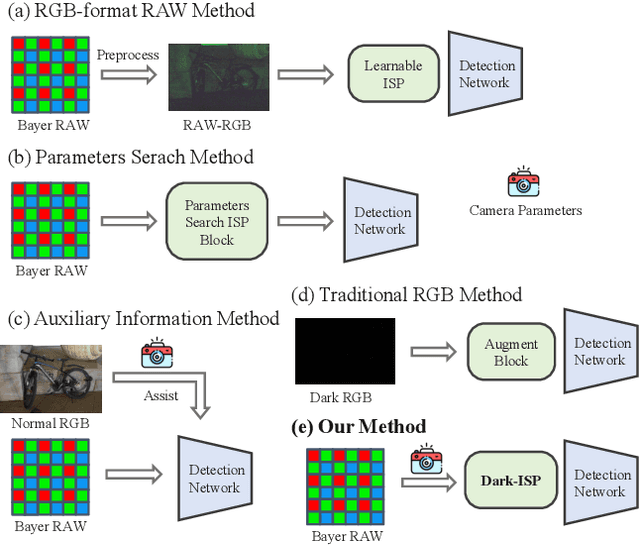
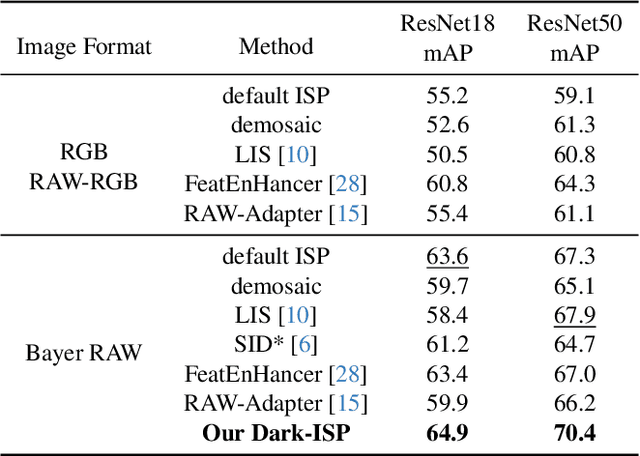
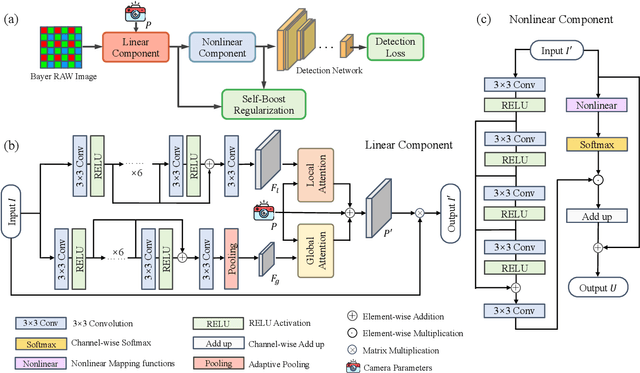
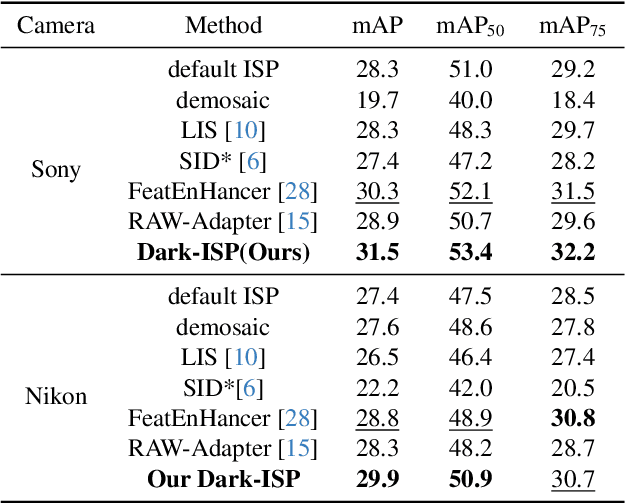
Abstract:Low-light Object detection is crucial for many real-world applications but remains challenging due to degraded image quality. While recent studies have shown that RAW images offer superior potential over RGB images, existing approaches either use RAW-RGB images with information loss or employ complex frameworks. To address these, we propose a lightweight and self-adaptive Image Signal Processing (ISP) plugin, Dark-ISP, which directly processes Bayer RAW images in dark environments, enabling seamless end-to-end training for object detection. Our key innovations are: (1) We deconstruct conventional ISP pipelines into sequential linear (sensor calibration) and nonlinear (tone mapping) sub-modules, recasting them as differentiable components optimized through task-driven losses. Each module is equipped with content-aware adaptability and physics-informed priors, enabling automatic RAW-to-RGB conversion aligned with detection objectives. (2) By exploiting the ISP pipeline's intrinsic cascade structure, we devise a Self-Boost mechanism that facilitates cooperation between sub-modules. Through extensive experiments on three RAW image datasets, we demonstrate that our method outperforms state-of-the-art RGB- and RAW-based detection approaches, achieving superior results with minimal parameters in challenging low-light environments.
* 11 pages, 6 figures, conference
Middo: Model-Informed Dynamic Data Optimization for Enhanced LLM Fine-Tuning via Closed-Loop Learning
Aug 29, 2025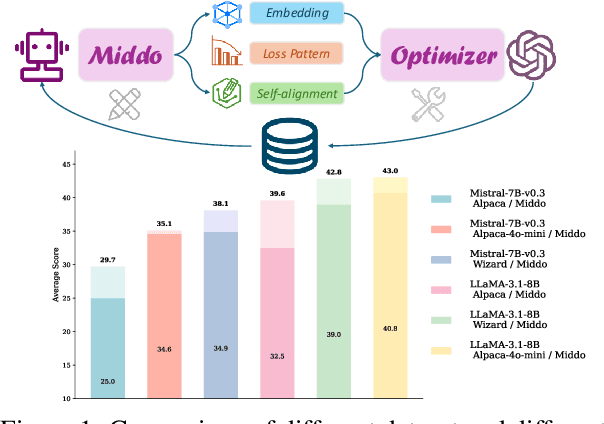
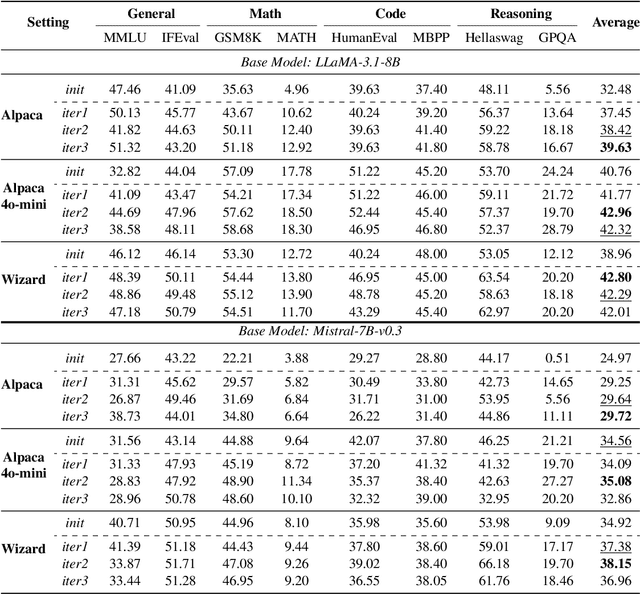
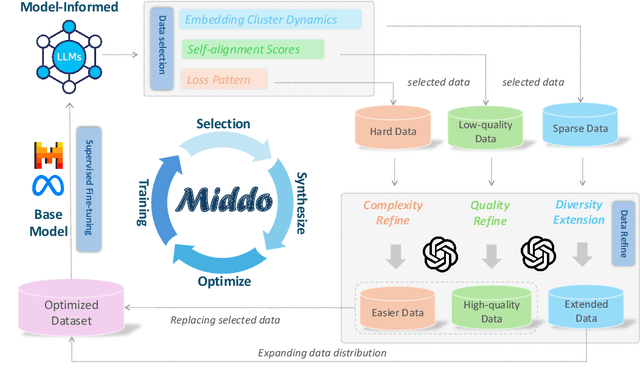
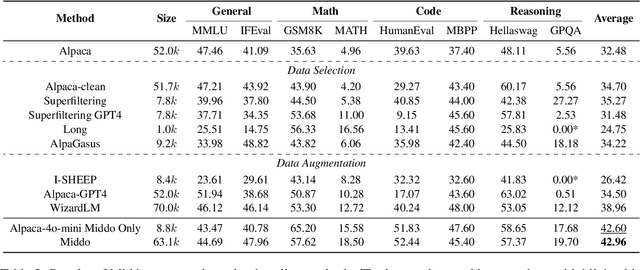
Abstract:Supervised Fine-Tuning (SFT) Large Language Models (LLM) fundamentally rely on high-quality training data. While data selection and data synthesis are two common strategies to improve data quality, existing approaches often face limitations in static dataset curation that fail to adapt to evolving model capabilities. In this paper, we introduce Middo, a self-evolving Model-informed dynamic data optimization framework that uses model-aware data selection and context-preserving data refinement. Unlike conventional one-off filtering/synthesis methods, our framework establishes a closed-loop optimization system: (1) A self-referential diagnostic module proactively identifies suboptimal samples through tri-axial model signals - loss patterns (complexity), embedding cluster dynamics (diversity), and self-alignment scores (quality); (2) An adaptive optimization engine then transforms suboptimal samples into pedagogically valuable training points while preserving semantic integrity; (3) This optimization process continuously evolves with model capability through dynamic learning principles. Experiments on multiple benchmarks demonstrate that our \method consistently enhances the quality of seed data and boosts LLM's performance with improving accuracy by 7.15% on average while maintaining the original dataset scale. This work establishes a new paradigm for sustainable LLM training through dynamic human-AI co-evolution of data and models. Our datasets, models, and code are coming soon.
Dino U-Net: Exploiting High-Fidelity Dense Features from Foundation Models for Medical Image Segmentation
Aug 28, 2025Abstract:Foundation models pre-trained on large-scale natural image datasets offer a powerful paradigm for medical image segmentation. However, effectively transferring their learned representations for precise clinical applications remains a challenge. In this work, we propose Dino U-Net, a novel encoder-decoder architecture designed to exploit the high-fidelity dense features of the DINOv3 vision foundation model. Our architecture introduces an encoder built upon a frozen DINOv3 backbone, which employs a specialized adapter to fuse the model's rich semantic features with low-level spatial details. To preserve the quality of these representations during dimensionality reduction, we design a new fidelity-aware projection module (FAPM) that effectively refines and projects the features for the decoder. We conducted extensive experiments on seven diverse public medical image segmentation datasets. Our results show that Dino U-Net achieves state-of-the-art performance, consistently outperforming previous methods across various imaging modalities. Our framework proves to be highly scalable, with segmentation accuracy consistently improving as the backbone model size increases up to the 7-billion-parameter variant. The findings demonstrate that leveraging the superior, dense-pretrained features from a general-purpose foundation model provides a highly effective and parameter-efficient approach to advance the accuracy of medical image segmentation. The code is available at https://github.com/yifangao112/DinoUNet.
CD-TVD: Contrastive Diffusion for 3D Super-Resolution with Scarce High-Resolution Time-Varying Data
Aug 13, 2025Abstract:Large-scale scientific simulations require significant resources to generate high-resolution time-varying data (TVD). While super-resolution is an efficient post-processing strategy to reduce costs, existing methods rely on a large amount of HR training data, limiting their applicability to diverse simulation scenarios. To address this constraint, we proposed CD-TVD, a novel framework that combines contrastive learning and an improved diffusion-based super-resolution model to achieve accurate 3D super-resolution from limited time-step high-resolution data. During pre-training on historical simulation data, the contrastive encoder and diffusion superresolution modules learn degradation patterns and detailed features of high-resolution and low-resolution samples. In the training phase, the improved diffusion model with a local attention mechanism is fine-tuned using only one newly generated high-resolution timestep, leveraging the degradation knowledge learned by the encoder. This design minimizes the reliance on large-scale high-resolution datasets while maintaining the capability to recover fine-grained details. Experimental results on fluid and atmospheric simulation datasets confirm that CD-TVD delivers accurate and resource-efficient 3D super-resolution, marking a significant advancement in data augmentation for large-scale scientific simulations. The code is available at https://github.com/Xin-Gao-private/CD-TVD.
EcoTransformer: Attention without Multiplication
Jul 27, 2025Abstract:The Transformer, with its scaled dot-product attention mechanism, has become a foundational architecture in modern AI. However, this mechanism is computationally intensive and incurs substantial energy costs. We propose a new Transformer architecture EcoTransformer, in which the output context vector is constructed as the convolution of the values using a Laplacian kernel, where the distances are measured by the L1 metric between the queries and keys. Compared to dot-product based attention, the new attention score calculation is free of matrix multiplication. It performs on par with, or even surpasses, scaled dot-product attention in NLP, bioinformatics, and vision tasks, while consuming significantly less energy.
LRMR: LLM-Driven Relational Multi-node Ranking for Lymph Node Metastasis Assessment in Rectal Cancer
Jul 15, 2025Abstract:Accurate preoperative assessment of lymph node (LN) metastasis in rectal cancer guides treatment decisions, yet conventional MRI evaluation based on morphological criteria shows limited diagnostic performance. While some artificial intelligence models have been developed, they often operate as black boxes, lacking the interpretability needed for clinical trust. Moreover, these models typically evaluate nodes in isolation, overlooking the patient-level context. To address these limitations, we introduce LRMR, an LLM-Driven Relational Multi-node Ranking framework. This approach reframes the diagnostic task from a direct classification problem into a structured reasoning and ranking process. The LRMR framework operates in two stages. First, a multimodal large language model (LLM) analyzes a composite montage image of all LNs from a patient, generating a structured report that details ten distinct radiological features. Second, a text-based LLM performs pairwise comparisons of these reports between different patients, establishing a relative risk ranking based on the severity and number of adverse features. We evaluated our method on a retrospective cohort of 117 rectal cancer patients. LRMR achieved an area under the curve (AUC) of 0.7917 and an F1-score of 0.7200, outperforming a range of deep learning baselines, including ResNet50 (AUC 0.7708). Ablation studies confirmed the value of our two main contributions: removing the relational ranking stage or the structured prompting stage led to a significant performance drop, with AUCs falling to 0.6875 and 0.6458, respectively. Our work demonstrates that decoupling visual perception from cognitive reasoning through a two-stage LLM framework offers a powerful, interpretable, and effective new paradigm for assessing lymph node metastasis in rectal cancer.
PAST: A multimodal single-cell foundation model for histopathology and spatial transcriptomics in cancer
Jul 08, 2025Abstract:While pathology foundation models have transformed cancer image analysis, they often lack integration with molecular data at single-cell resolution, limiting their utility for precision oncology. Here, we present PAST, a pan-cancer single-cell foundation model trained on 20 million paired histopathology images and single-cell transcriptomes spanning multiple tumor types and tissue contexts. By jointly encoding cellular morphology and gene expression, PAST learns unified cross-modal representations that capture both spatial and molecular heterogeneity at the cellular level. This approach enables accurate prediction of single-cell gene expression, virtual molecular staining, and multimodal survival analysis directly from routine pathology slides. Across diverse cancers and downstream tasks, PAST consistently exceeds the performance of existing approaches, demonstrating robust generalizability and scalability. Our work establishes a new paradigm for pathology foundation models, providing a versatile tool for high-resolution spatial omics, mechanistic discovery, and precision cancer research.
CFP-Gen: Combinatorial Functional Protein Generation via Diffusion Language Models
May 28, 2025Abstract:Existing PLMs generate protein sequences based on a single-condition constraint from a specific modality, struggling to simultaneously satisfy multiple constraints across different modalities. In this work, we introduce CFP-Gen, a novel diffusion language model for Combinatorial Functional Protein GENeration. CFP-Gen facilitates the de novo protein design by integrating multimodal conditions with functional, sequence, and structural constraints. Specifically, an Annotation-Guided Feature Modulation (AGFM) module is introduced to dynamically adjust the protein feature distribution based on composable functional annotations, e.g., GO terms, IPR domains and EC numbers. Meanwhile, the Residue-Controlled Functional Encoding (RCFE) module captures residue-wise interaction to ensure more precise control. Additionally, off-the-shelf 3D structure encoders can be seamlessly integrated to impose geometric constraints. We demonstrate that CFP-Gen enables high-throughput generation of novel proteins with functionality comparable to natural proteins, while achieving a high success rate in designing multifunctional proteins. Code and data available at https://github.com/yinjunbo/cfpgen.
 Add to Chrome
Add to Chrome Add to Firefox
Add to Firefox Add to Edge
Add to Edge